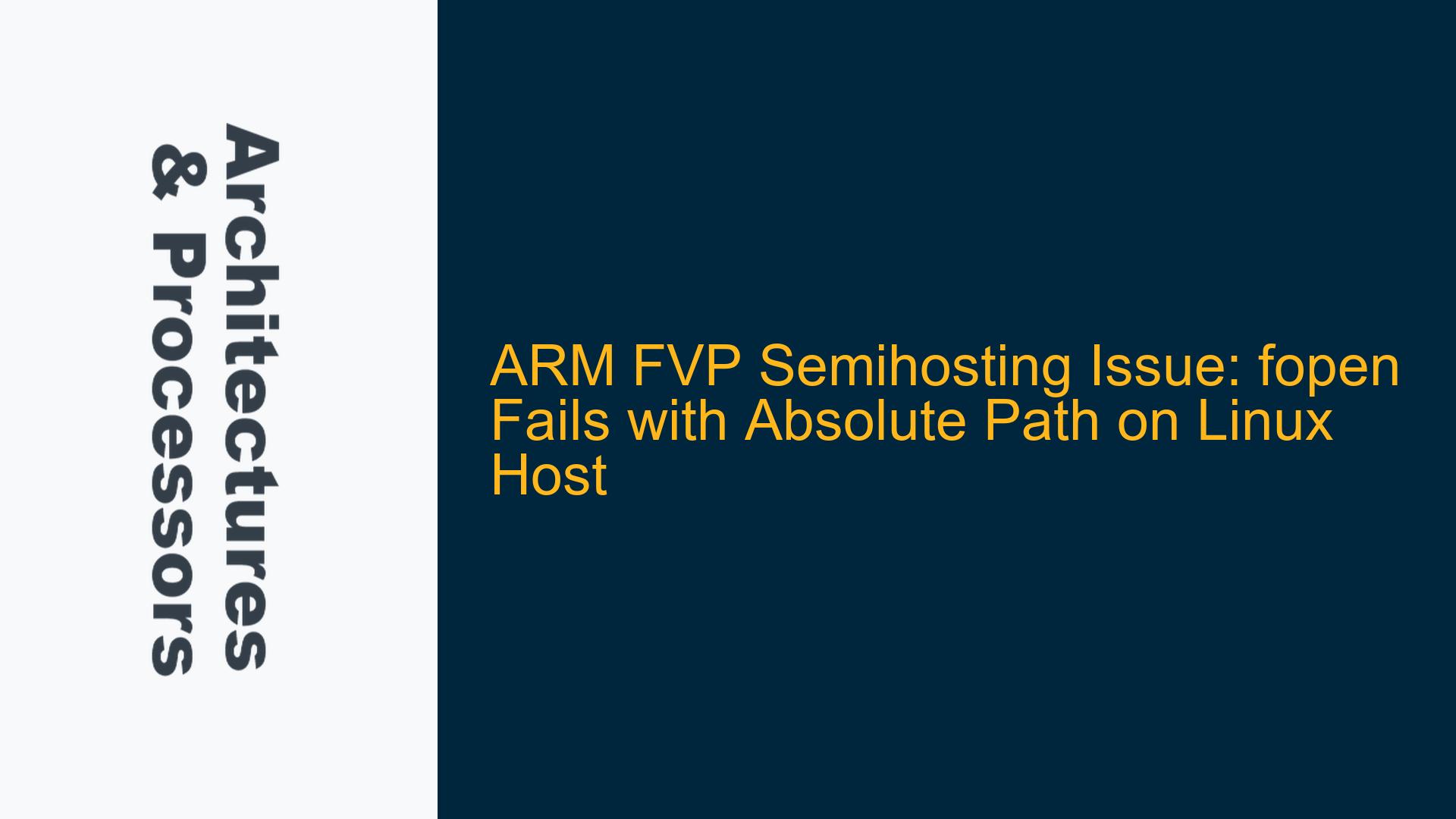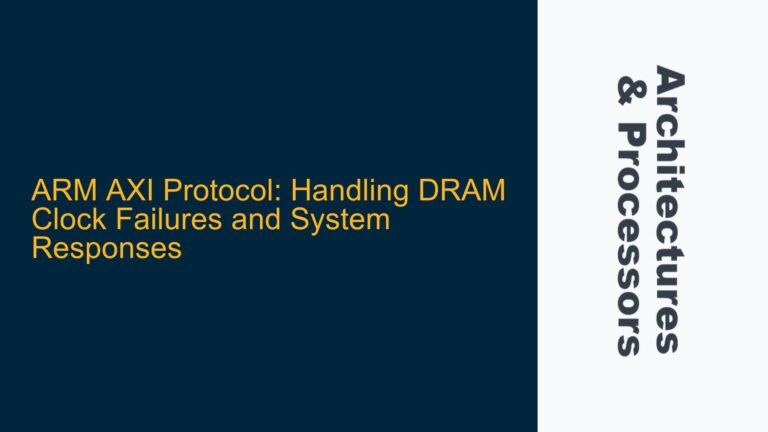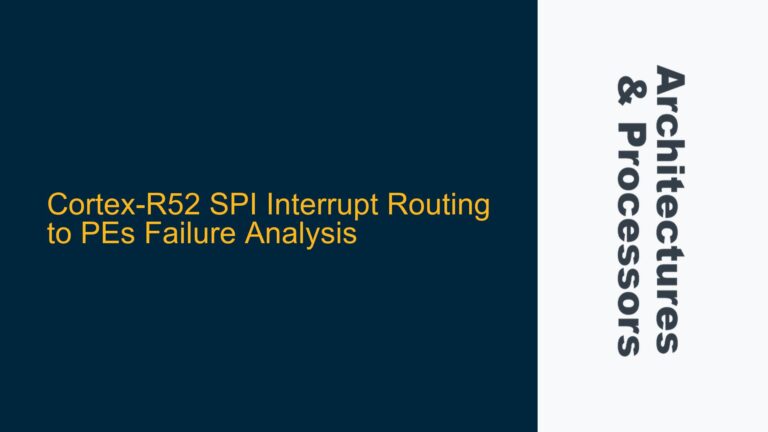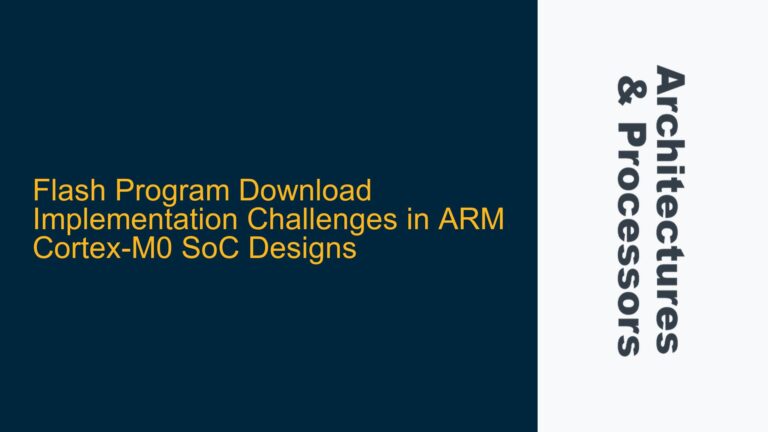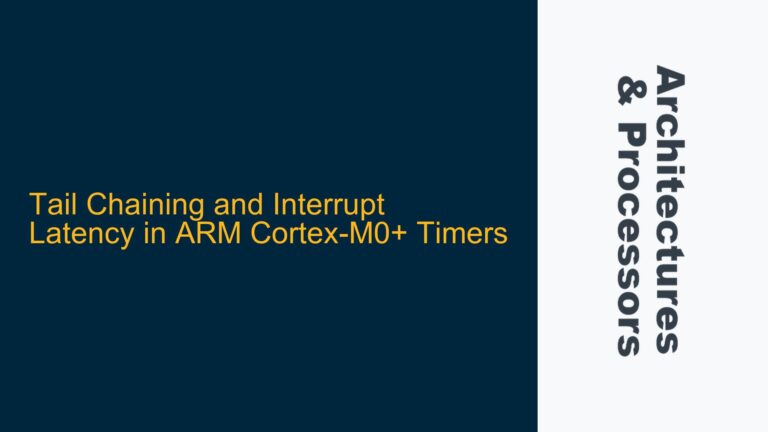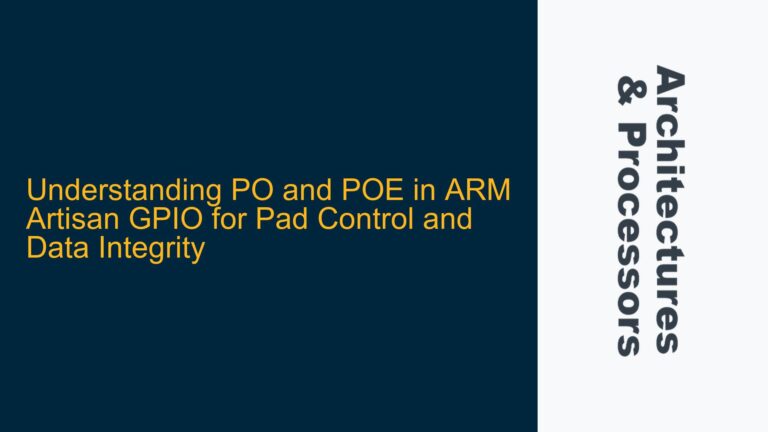ARM Cortex-M55 Semihosting and File Access Challenges
The issue at hand revolves around the failure of the fopen function to open a file using an absolute path on a Linux host (Ubuntu 20.04) when running a program on an ARM Fixed Virtual Platform (FVP) simulator. The program is designed to read data from a binary file located on the host machine, but the fopen call consistently fails, returning a NULL pointer and setting errno to 0. This problem is particularly perplexing because the file path appears correct, and the program is compiled with the ARM GNU toolchain (arm-gnu-toolchain-13.3.rel1-x86_64-arm-none-eabi). The FVP in use is the Corstone-300 Ecosystem FVP, specifically the FVP_Corstone_SSE-300_Ethos-U55 model.
The core of the problem lies in the interaction between the ARM Cortex-M55 processor, the FVP simulator, and the Linux host’s file system. The fopen function relies on semihosting, a mechanism that allows the ARM target (in this case, the Cortex-M55) to access resources on the host machine, such as files. Semihosting is a critical feature for debugging and development, as it enables the target to perform operations that would otherwise require a full operating system. However, semihosting is disabled by default on the FVP_Corstone_SSE-300_Ethos-U55, which is a key factor contributing to the fopen failure.
Semihosting Configuration and Path Resolution Errors
The failure of fopen in this context can be attributed to several potential causes, each of which must be carefully examined to resolve the issue. The first and most obvious cause is the absence of the leading forward slash in the file path. In Unix-like systems, absolute paths must begin with a forward slash (/). The original code provided by the user used const char *filename = "home/dinusha/executorch/examples/arm/executor_runner/cmake-out/input.bin";, which is missing the leading slash. However, even after correcting this, the issue persisted, indicating that the problem is more complex.
Another critical factor is the configuration of semihosting on the FVP. Semihosting must be explicitly enabled for the Cortex-M55 CPU in the FVP. This is done by passing the -C cpu0.semihosting-enable=1 parameter when starting the FVP. Without this parameter, the Cortex-M55 cannot communicate with the host’s file system, rendering fopen ineffective. Even with semihosting enabled, the program must be linked with the appropriate semihosting libraries. The ARM GNU toolchain provides two sets of semihosting libraries: rdimon.specs and nano.specs. The rdimon.specs library is specifically designed for semihosting operations and must be used when compiling and linking the program. Failure to link with rdimon.specs will result in unresolved symbols for semihosting functions, causing fopen to fail.
Additionally, the file permissions on the host machine must be examined. The user running the FVP must have read access to the file specified in the fopen call. If the file permissions are too restrictive, the fopen call will fail, even if the path is correct and semihosting is properly configured. The errno value of 0 in this case is unusual, as it typically indicates no error, but in the context of semihosting, it may suggest that the semihosting call itself is not being properly executed.
Enabling Semihosting and Correcting File Access
To resolve the fopen failure, a systematic approach must be taken to ensure that all components are correctly configured and that the program can access the file on the host machine. The following steps outline the necessary actions to troubleshoot and fix the issue.
Step 1: Verify the File Path
The first step is to ensure that the file path is correctly specified. The path must be absolute and must include the leading forward slash. For example:
const char *filename = "/home/dinusha/executorch/examples/arm/executor_runner/cmake-out/input.bin";
This path should be verified by attempting to open the file directly on the host machine using a simple C program or a shell command such as cat or ls.
Step 2: Enable Semihosting on the FVP
Semihosting must be explicitly enabled on the FVP. This is done by adding the -C cpu0.semihosting-enable=1 parameter to the FVP command line. For example:
/home/dinusha/executorch/examples/arm/ethos-u-scratch/FVP-corstone300/models/Linux64_GCC-9.3/FVP_Corstone_SSE-300_Ethos-U55 \
-C cpu0.semihosting-enable=1 \
-C ethosu.num_macs=${num_macs} \
-C mps3_board.visualisation.disable-visualisation=1 \
-C mps3_board.telnetterminal0.start_telnet=0 \
-C mps3_board.uart0.out_file='-' \
-C mps3_board.uart0.shutdown_on_eot=1 \
-a ./executor_runner/cmake-out/arm_executor_runner \
--timelimit 220 || true
This ensures that the Cortex-M55 CPU can communicate with the host’s file system.
Step 3: Link with the Correct Semihosting Libraries
The program must be linked with the rdimon.specs library to enable semihosting. This is done by adding the --specs=rdimon.specs flag to the linker command. For example:
arm-none-eabi-gcc -o arm_executor_runner arm_executor_runner.c --specs=rdimon.specs
This ensures that the necessary semihosting functions are available to the program.
Step 4: Verify File Permissions
The file permissions on the host machine must be checked to ensure that the user running the FVP has read access to the file. This can be done using the ls -l command:
ls -l /home/dinusha/executorch/examples/arm/executor_runner/cmake-out/input.bin
The output should show that the file is readable by the user. If not, the permissions can be adjusted using the chmod command:
chmod 644 /home/dinusha/executorch/examples/arm/executor_runner/cmake-out/input.bin
Step 5: Debugging and Error Handling
If the above steps do not resolve the issue, additional debugging may be necessary. This can include adding more detailed error handling to the program to capture any additional information about why fopen is failing. For example:
FILE* fp = fopen(filename, "rb");
if (!fp) {
perror("Error opening file");
ET_LOG(Fatal, "Could not open file %s (errno: %d) for reading, exiting!", filename, errno);
_exit(1);
}
The perror function will print a descriptive error message based on the value of errno, which can provide more insight into the cause of the failure.
Step 6: Consult FVP Documentation and Community
If the issue persists, it may be necessary to consult the FVP documentation or seek assistance from the ARM community. The FVP documentation may contain additional configuration options or troubleshooting steps that are specific to the FVP_Corstone_SSE-300_Ethos-U55 model. Additionally, the ARM community forums can be a valuable resource for finding solutions to similar issues.
By following these steps, the issue of fopen failing with an absolute path on a Linux host when using the ARM FVP simulator can be systematically addressed. Ensuring that semihosting is correctly configured, the file path is accurate, and the necessary libraries are linked are all critical components of resolving this issue.
